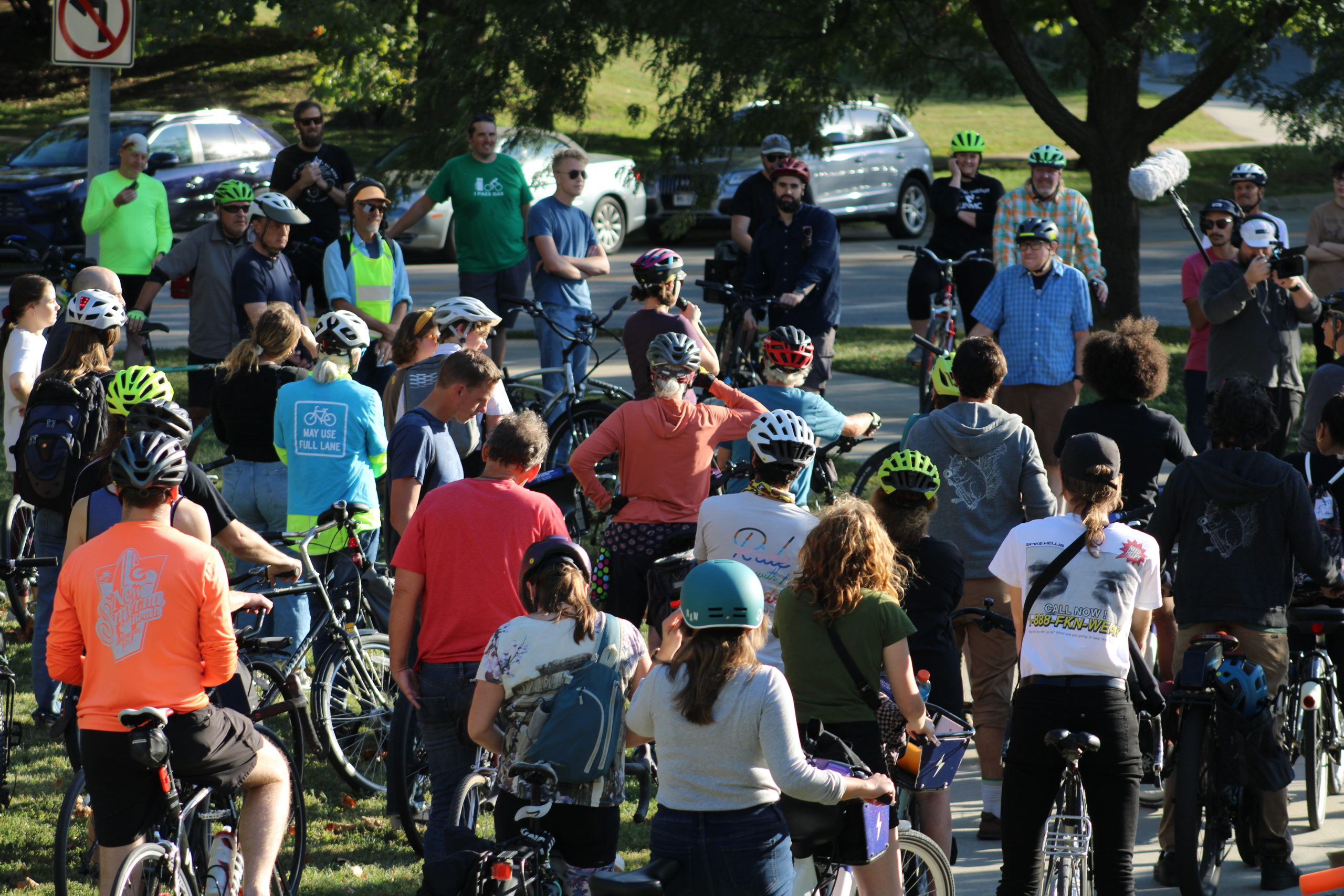Metro Community College’s board is divided into specific geographies (as well as an at-large seat). District 2 covers much of Northeast Omaha, including the Fort Omaha Campus. MCC has been a leader in post-secondary institutions promoting Active Transportation. This Friday, October 19, at 8 a.m. we’ve invited the candidates for the District 2 board seat to be our guests at our monthly coffee chat. We’ll be meeting up at the Scooters in the corner of 30th and Ames Ave.
To get to know the candidates ahead of time, we asked them five questions . . .
Erin Feichtinger
1. What is your preferred mode of transportation?
Walking and my bike (thanks Bike Union!)
2. What, in your opinion, is the greatest challenge to multi-modal transportation in Omaha?
We are a car-centered city – a fact reflected in the continued sprawl westward without the appropriate infrastructure to support it, introducing bonds expanding roads to hold more cars, prioritizing streets at the expense of sidewalks, and a lack of interest in the kind of urban density that would put employment centers close to where people live and to accessible transportation. All of this leads to a lack of awareness of multi-modal transportation and so, a lack of prioritization in the public will. It’s pretty frustrating.
3. What, in your opinion, the the greatest multi-modal success in Omaha?
Promoting active transportation in Omaha is a multi-layered issue that’s going to have to be addressed at several levels, so it’s hard to say what is the greatest success. The trail system is a massive and successful public infrastructure that I love to utilize. There are neighborhoods in the city that promote walkability and so, attracting people who like the idea of living close to where they work and where they play, and this is changing the conversation about transportation from “Let’s drive there” to, “Let’s walk up to…” (Dundee, Gifford Park, the Old Market, Benson, North 24th St., for example). Metro Area Transit has been receptive to community input about improving their services which has been a huge benefit to the people who need it most – like the #24 increasing its frequency to 15 minute intervals to serve communities who most need it to get to work and to social services. Really, though, the greatest success is the fact that this conversation about how to promote active transit is taking place at all, and that it’s having an impact across the spectrum – we have a bike lane on Leavenworth! Community bike shops! Rapid Bus Transit coming! Now we just need to fix the sidewalks to protect pedestrians all across the city.
4. How did you come to have an interest in transportation?
Growing up in West Omaha, not exactly a paragon of multi-modal transportation, I didn’t have a lot of exposure to questions of transportation. Then I moved to Chicago for school. Though everyone there has their frustrations with transit, the necessity and convenience of an effective multi-modal transportation infrastructure was thrown in sharp relief. I rode the train or the bus every day and it took me everywhere I could want to go. I rode my bike to and from school and work along the lake shore path, the north river trail, and the bike lanes all over the city. I walked everywhere I could. And what you start to realize is that when you’re not in a car, you experience the world and your community so much more intimately, and in Technicolor. Moving back home to Omaha, the lack of an effective and sprawling public transportation system was inconvenient, to say the least. The work I do every day, designing programs to help increase access to necessary social services for people who need them, cements even further how crucial it is to promote accessible and multi-modal transportation. It’s hard to tell someone to go to this particular place at this particular time if they don’t have access to a vehicle. The lack of access to transportation that is close to where people live and where they work and the services they need is a huge and unnecessary barrier.
5. If you could magically change one thing about the transportation systems in Omaha, without limit to budget or feasibility, what would it be
Increase the frequency of every bus route. Put in more visible bus signs that explain what bus is coming, the route, and its frequency. Provide training for every Omahan on how to ride and navigate public transportation free of charge, especially focusing on collaborating with social service agencies and the public schools. Increase the number of routes and make them go further west and to employment centers. Protected bike lanes. Education for drivers on how to share the road with cyclists and pedestrians. Protected sidewalks along busy roads like Dodge. ADA sidewalks EVERYWHERE.
My answers are a bit long – I just get really jazzed about this topic.
Brad Ashby
Declined to respond.

